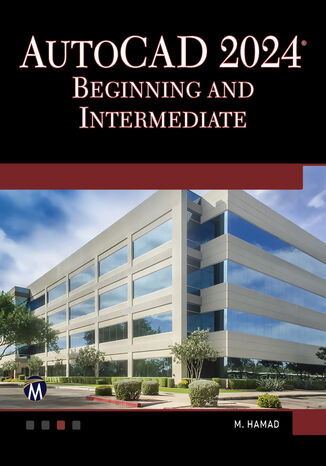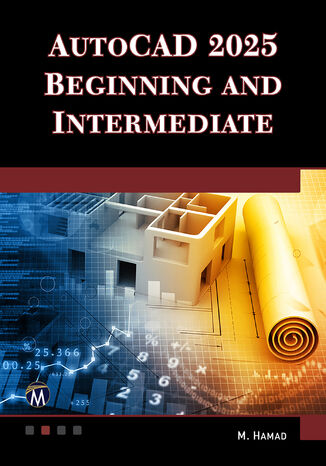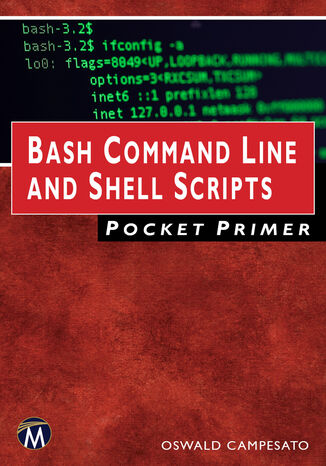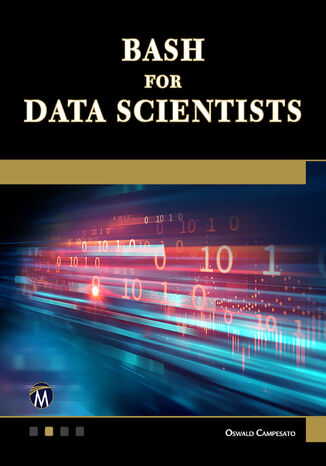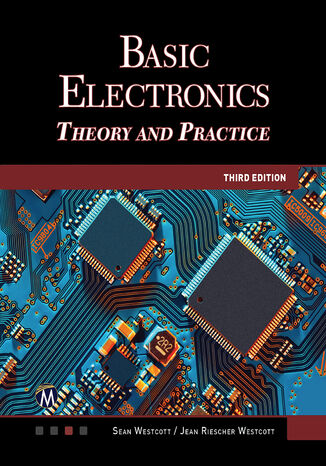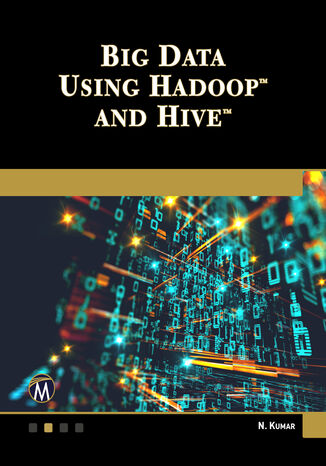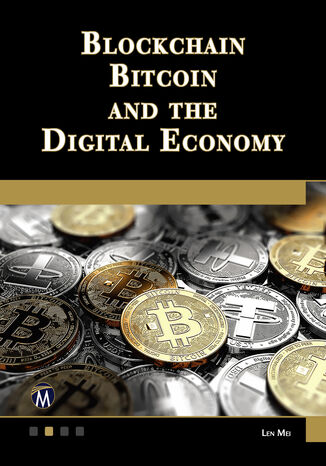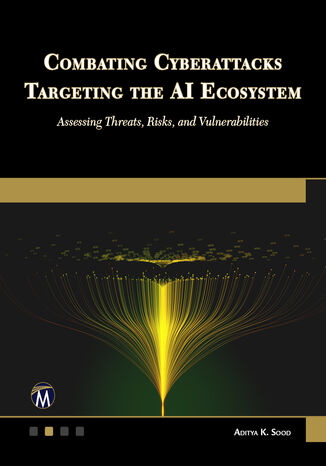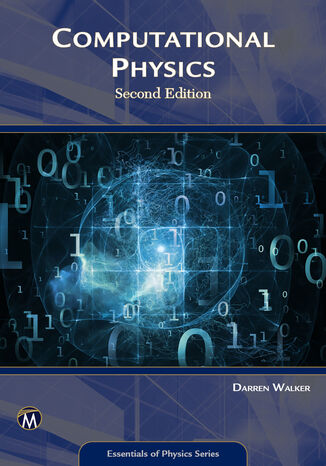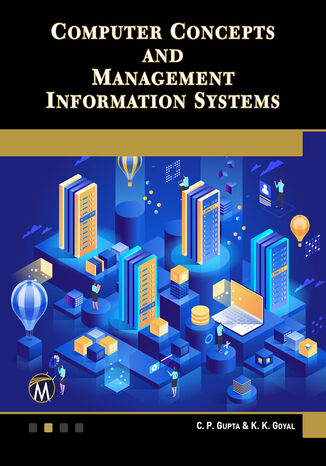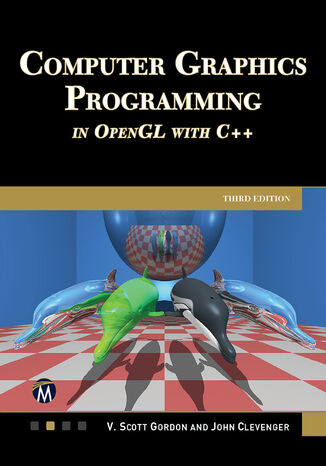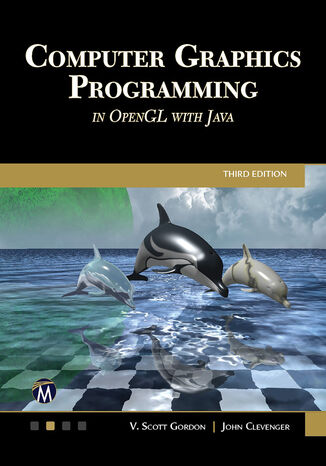Categories
-
- Bitcoin
- Businesswoman
- Coaching
- Controlling
- E-business
- Economy
- Finances
- Stocks and investments
- Personal competence
- Computer in the office
- Communication and negotiation
- Small company
- Marketing
- Motivation
- Multimedia trainings
- Real estate
- Persuasion and NLP
- Taxes
- Social policy
- Guides
- Presentations
- Leadership
- Public Relation
- Reports, analyses
- Secret
- Social Media
- Sales
- Start-up
- Your career
- Management
- Project management
- Human Resources
-
- Architektura i wnętrza
- Health and Safety
- Biznes i Ekonomia
- Home and garden
- E-business
- Ekonomia i finanse
- Esoterecism
- Finances
- Personal finance
- Business
- Photography
- Computer science
- HR & Payroll
- For women
- Computers, Excel
- Accounts
- Culture and literature
- Scientific and academic
- Environmental protection
- Opinion-forming
- Education
- Taxes
- Travelling
- Psychology
- Religion
- Agriculture
- Book and press market
- Transport and Spedition
- Healthand beauty
-
- Office applications
- Data bases
- Bioinformatics
- IT business
- CAD/CAM
- Digital Lifestyle
- DTP
- Electronics
- Digital photography
- Computer graphics
- Games
- Hacking
- Hardware
- IT w ekonomii
- Scientific software package
- School textbooks
- Computer basics
- Programming
- Mobile programming
- Internet servers
- Computer networks
- Start-up
- Operational systems
- Artificial intelligence
- Technology for children
- Webmastering
-
- Antology
- Ballade
- Biographies and autobiographies
- For adults
- Dramas
- Diaries, memoirs, letters
- Epic, epopee
- Essay
- Fantasy and science fiction
- Feuilletons
- Work of fiction
- Humour and satire
- Other
- Classical
- Crime fiction
- Non-fiction
- Fiction
- Mity i legendy
- Nobelists
- Novellas
- Moral
- Okultyzm i magia
- Short stories
- Memoirs
- Travelling
- Narrative poetry
- Poetry
- Politics
- Popular science
- Novel
- Historical novel
- Prose
- Adventure
- Journalism, publicism
- Reportage novels
- Romans i literatura obyczajowa
- Sensational
- Thriller, Horror
- Interviews and memoirs
-
- Archeology
- Bibliotekoznawstwo
- Cinema studies
- Philology
- Polish philology
- Philosophy
- Finanse i bankowość
- Geography
- Economy
- Trade. World economy
- History and archeology
- History of art and architecture
- Cultural studies
- Linguistics
- Literary studies
- Logistics
- Maths
- Medicine
- Humanities
- Pedagogy
- Educational aids
- Popular science
- Other
- Psychology
- Sociology
- Theatre studies
- Theology
- Economic theories and teachings
- Transport i spedycja
- Physical education
- Zarządzanie i marketing
-
- Health and Safety
- History
- Road Code. Driving license
- Law studies
- Healthcare
- General. Compendium of knowledge
- Academic textbooks
- Other
- Construction and local law
- Civil law
- Financial law
- Economic law
- Economic and trade law
- Criminal law
- Criminal law. Criminal offenses. Criminology
- International law
- International law
- Health care law
- Educational law
- Tax law
- Labor and social security law
- Public, constitutional and administrative law
- Family and Guardianship Code
- agricultural law
- Social law, labour law
- European Union law
- Industry
- Agricultural and environmental
- Dictionaries and encyclopedia
- Public procurement
- Management
-
- Africa
- Albums
- Southern America
- North and Central America
- Australia, New Zealand, Oceania
- Austria
- Asia
- Balkans
- Middle East
- Bulgary
- China
- Croatia
- The Czech Republic
- Denmark
- Egipt
- Estonia
- Europe
- France
- Mountains
- Greece
- Spain
- Holand
- Iceland
- Lithuania
- Latvia
- Mapy, Plany miast, Atlasy
- Mini travel guides
- Germany
- Norway
- Active travelling
- Poland
- Portugal
- Other
- Przewodniki po hotelach i restauracjach
- Russia
- Romania
- Slovakia
- Slovenia
- Switzerland
- Sweden
- World
- Turkey
- Ukraine
- Hungary
- Great Britain
- Italy
-
- Philosophy of life
- Kompetencje psychospołeczne
- Interpersonal communication
- Mindfulness
- General
- Persuasion and NLP
- Academic psychology
- Psychology of soul and mind
- Work psychology
- Relacje i związki
- Parenting and children psychology
- Problem solving
- Intellectual growth
- Secret
- Sexapeal
- Seduction
- Appearance and image
- Philosophy of life
-
- Bitcoin
- Businesswoman
- Coaching
- Controlling
- E-business
- Economy
- Finances
- Stocks and investments
- Personal competence
- Communication and negotiation
- Small company
- Marketing
- Motivation
- Real estate
- Persuasion and NLP
- Taxes
- Social policy
- Guides
- Presentations
- Leadership
- Public Relation
- Secret
- Social Media
- Sales
- Start-up
- Your career
- Management
- Project management
- Human Resources
-
- Antology
- Ballade
- Biographies and autobiographies
- For adults
- Dramas
- Diaries, memoirs, letters
- Epic, epopee
- Essay
- Fantasy and science fiction
- Feuilletons
- Work of fiction
- Humour and satire
- Other
- Classical
- Crime fiction
- Non-fiction
- Fiction
- Mity i legendy
- Nobelists
- Novellas
- Moral
- Okultyzm i magia
- Short stories
- Memoirs
- Travelling
- Poetry
- Politics
- Popular science
- Novel
- Historical novel
- Prose
- Adventure
- Journalism, publicism
- Reportage novels
- Romans i literatura obyczajowa
- Sensational
- Thriller, Horror
- Interviews and memoirs
-
- Philosophy of life
- Interpersonal communication
- Mindfulness
- General
- Persuasion and NLP
- Academic psychology
- Psychology of soul and mind
- Work psychology
- Relacje i związki
- Parenting and children psychology
- Problem solving
- Intellectual growth
- Secret
- Sexapeal
- Seduction
- Appearance and image
- Philosophy of life
AutoCAD 2024 Beginning and Intermediate. Mastering 2D Drafting Techniques for All Levels
Mercury Learning and Information, Munir Hamad
This book comprehensively covers AutoCAD 2024 – 2D Drafting, using metric and imperial units. It details drawing and editing tools with companion files for exercises and projects (available for free download). With over 100 exercises, it guides readers from basic commands to complex projects, ensuring no fundamental aspect is overlooked.Starting with AutoCAD basics, the book covers precise drafting, modifying commands, layering, text writing, dimensioning, and plotting. Advanced topics include block tools, table styles, dimension styles, interface customization, parametric constraints, dynamic blocks, external referencing, sheet sets, and CAD standards.This guide is essential for mastering AutoCAD 2024, transitioning users from beginners to proficient drafters with practical skills and comprehensive knowledge. Companion files enhance hands-on practice and mastery of 2D drafting.
AutoCAD 2025 3D Modeling. Master essential 3D modeling techniques with AutoCAD 2025
Mercury Learning and Information, Munir Hamad
Master the art of 3D modeling with this comprehensive book tailored for AutoCAD 2025. Designed for beginners and experienced users alike, this book begins with an introduction to the AutoCAD 3D environment, providing clear and concise instructions for navigating its interface and essential tools. By building a strong foundation, it sets the stage for more advanced techniques.As the chapters progress, readers are introduced to creating and editing solids, meshes, and surfaces, exploring AutoCAD’s powerful commands and features. Learn how to apply realistic materials, incorporate lighting, and generate stunning 3D renderings to bring your designs to life. The guide also delves into converting and sectioning tools, enabling you to create detailed and precise outputs for professional use.By the end of this book, readers will have acquired a deep understanding of AutoCAD’s 3D capabilities, empowering them to tackle complex design challenges with confidence. Whether you are an architect, engineer, or CAD enthusiast, this guide will equip you with the skills to enhance productivity and deliver outstanding results.
AutoCAD 2025 Beginning and Intermediate. Master essential drafting techniques with AutoCAD 2025
Mercury Learning and Information, Munir Hamad
This book serves as a comprehensive introduction and guide to AutoCAD 2025. Whether you are starting from scratch or seeking to expand your existing knowledge, this resource provides practical skills and an in-depth understanding of essential drafting and design concepts. Its clear instructions and practical examples ensure an engaging learning experience.Covering everything from basic commands to advanced techniques, the book includes detailed chapters on layers, dimensions, plotting, and more. Explore the creation and manipulation of 2D and 3D objects, parametric constraints, and customization tools. With guidance on CAD standards, dynamic blocks, and external referencing, this book bridges the gap between foundational skills and professional-level proficiency.By the end of this journey, readers will have acquired the tools to design, draft, and model with confidence. Learn to optimize workflows, integrate CAD standards, and bring projects to completion effectively and efficiently.
Autodesk Revit 2025 Architecture. Mastering Revit Techniques for Efficient Architectural Design
Mercury Learning and Information, Munir Hamad
This book is a complete guide to mastering Autodesk Revit 2025, starting with the basics and progressively covering advanced architectural design techniques. It begins by introducing the Revit interface, navigation tools, and essential concepts like CAD vs. BIM, ensuring a solid foundation for beginners.Readers will then learn to create and modify architectural elements, such as walls, doors, windows, and roofs while exploring detailed workflows for project setup, annotation, and documentation. Each chapter includes hands-on exercises and practical examples to reinforce learning and improve proficiency with Revit’s powerful tools.The final sections delve into advanced topics like creating families, managing work sets, and using project phasing and design options. By the end of the book, readers will have gained the expertise to use Revit effectively in real-world architectural projects, making it an essential resource for both novice and experienced users.
Autodesk(R) Revit(R) 2024 Architecture. Mastering Building Design with BIM
Mercury Learning and Information, Munir Hamad
This book covers all major techniques in Revit 2024 Architecture using both metric and imperial units. It details the myriad drawing and editing tools and includes over 50 mini-workshops that guide users from concept to plotting. By solving these workshops, readers will master Revit Architecture, covering all basic commands and functions. Companion files with templates and models are available for practical application.The course begins with an introduction to Revit 2024, followed by detailed chapters on drawing, modifying, project preparation, and wall construction. Subsequent chapters cover doors, windows, curtain walls, floors, roofs, components, and ceilings. Users will also learn about creating stairs, ramps, railings, views, annotations, legends, and visualization.Further, the book delves into schedules, project phasing, design options, topography, rooms, tagging, detailing, groups, file import/export, mass creation, and customizing elements. It concludes with chapters on creating and customizing families, and managing worksets and shared views, ensuring comprehensive knowledge and skills in Revit 2024 Architecture.
Bash Command Line and Shell Scripts Pocket Primer. Mastering Bash Commands and Scripting Techniques
Mercury Learning and Information, Oswald Campesato
As part of the best-selling Pocket Primer series, this book introduces readers to useful command-line utilities for creating powerful shell scripts. It focuses on the “bash” command set, though many concepts apply to other command shells like sh, ksh, zsh, and csh. The book covers piping data between commands and using versatile sed and awk commands. Aimed at beginners, it also serves as a good reference for those with some experience in shell scripting.The journey starts with an introduction to bash, covering files and directories, useful commands, and conditional logic with loops. Readers then learn to filter data with grep, transform data with sed, and work with awk. The book introduces shell scripts, showcasing their use with grep and awk for data manipulation. Various scripts are provided for data scientists and analysts needing shell-based solutions for text file cleaning.Understanding these concepts is crucial for simplifying routine tasks and creating efficient shell scripts. This book transitions readers from novices to proficient scriptwriters, combining theoretical knowledge and practical skills. Companion files with source code examples enhance learning. By the end, readers will be equipped to implement shell scripts in real-world scenarios.
Bash for Data Scientists. A Comprehensive Guide to Shell Scripting for Data Science Tasks
Mercury Learning and Information, Oswald Campesato
This book introduces powerful command line utilities for creating efficient shell scripts to process datasets. Using the bash shell, the examples and scripts focus on small datasets to help readers understand the features of grep, sed, and awk. Companion files with code are available for download from the publisher.The course starts with an introduction to the basics, covering files and directories, and useful commands. It then progresses to conditional logic and loops, providing a solid foundation for processing datasets. Detailed chapters on using grep, sed, and awk illustrate their capabilities in handling and cleaning various types of datasets effectively.Advanced topics include processing datasets with Pandas, exploring NoSQL, SQLite, and Python. The book equips data scientists, analysts, and anyone seeking shell-based solutions with practical skills. By the end, users will be adept at creating robust scripts for dataset processing, combining command line utilities for optimal results.
Basic Electronics. Theory and Practice
Mercury Learning and Information, Sean Westcott, Jean Riescher Westcott
This updated edition introduces students and hobbyists to electronics, covering microcontrollers, sensors, and wireless communication. Each chapter includes a lab, progressing to building a robot with Arduino and Netduino. New material on Raspberry Pi and Python is included, with companion files featuring videos and code samples.The course begins with basic electronics concepts, building circuits, and understanding components. It covers digital theory and practical applications with sensors, motors, and microcontrollers. Topics include electricity theory, currents, circuits, tools, safety, and components like resistors, capacitors, diodes, and transistors. Advanced topics include power supplies, soldering, digital theory, integrated circuits, memory, and microcontrollers.These concepts are crucial for innovation in electronics. This book transitions readers from basic labs to constructing a robot using open-source hardware. It covers Raspberry Pi projects and explores cybersecurity and IoT. Appendices include math for electronics, a timeline of innovations, careers in electronics, and a glossary. This guide provides both theoretical knowledge and practical skills, making it invaluable for mastering electronics.
Big Data Using Hadoop and Hive. Master Big Data Solutions with Hadoop and Hive
Mercury Learning and Information, Nitin Kumar
This book is a guide for developers and engineers to use Hadoop and Hive for scalable big data applications. It covers reading, writing, and managing large datasets with Hive and provides a concise introduction to Apache Hadoop and Hive, detailing their collaboration to simplify development. Through clear examples, the book explains the logic, code, and configurations needed for building successful distributed applications.The course starts with an introduction to big data and Apache Hadoop fundamentals. It then covers the Hadoop Distributed Filesystem and how to get started with Hadoop. The journey continues with interfaces to access HDFS files, resource management with Yet Another Resource Negotiator, and MapReduce for data processing. The book also explores Hive architecture, storage types, and the Hive query language.Mastering these concepts is vital for creating scalable big data solutions. This book ensures a smooth transition from novice to proficient Hadoop and Hive user, providing practical skills and comprehensive knowledge. By the end, readers will be able to set up, configure, and optimize Hadoop, utilize Hive for data management, and effectively solve big data challenges.
Blockchain, Bitcoin, and the Digital Economy. Unlocking the Future of Financial Technology
Mercury Learning and Information, Len Mei
This book provides a comprehensive introduction to blockchain technology, discussing its fundamentals, development issues, potential applications, security, and use in cryptocurrency. It also delves into fintech, its current status, and related concepts in the digital economy. The rapidly changing nature of these topics makes the book a valuable resource for anyone interested in blockchain and cryptocurrency. Numerous references offer up-to-date information on these subjects.The course begins with an overview of blockchain and its basic concepts, followed by an in-depth look at Bitcoin and its associated issues. The journey continues with consensus mechanisms, exploring altcoins, and mutual distributed ledgers. The book then shifts focus to applications of blockchain beyond cryptocurrency, highlighting industrial uses, payment systems, and lending. Governance, regulation, and future trends in blockchain technology are also covered.Understanding these concepts is crucial for navigating the evolving landscape of blockchain and cryptocurrency. This book ensures a smooth transition from novice to knowledgeable enthusiast, equipping readers with practical insights and comprehensive knowledge. By the end, readers will grasp blockchain technology's impact on various industries and its potential for future innovations.
Mercury Learning and Information, Franz Lanzinger
This book teaches you to design and develop classic arcade video games. Using modern, free software tools like Unity, you’ll create five retro games inspired by the classics. All source code, art, and sound files are provided in the companion files. You'll enjoy customizing graphics, adjusting scoring, coding AI, and creating sound effects, gaining a deep understanding of the roots of modern video game design from the '70s and '80s.The course begins with an introduction and essential tools, then guides you through creating various retro games. Each chapter builds on the previous one with detailed instructions, exercises, and classic game design rules. The book includes historical anecdotes from a former Atari programmer and insights on applying classic game design concepts to modern games.Understanding these design elements is crucial for developing engaging video games. This book transitions readers from beginners to proficient game developers, blending theoretical knowledge with practical skills. Companion files enhance the learning experience, making this book an invaluable resource for mastering classic game design with modern tools.
Mercury Learning and Information, Aditya K. Sood
Artificial intelligence is transforming industries, but it also exposes organizations to new cyber threats. This course begins by introducing the foundational concepts of securing large language models (LLMs), generative AI applications, and the broader AI infrastructure. Participants will explore the evolving threat landscape, gaining insights into how attackers exploit vulnerabilities in AI systems and the risks posed by trust and compliance failures.The course provides real-world case studies to highlight attack vectors like adversarial inputs, data poisoning, and model theft. Participants will learn practical methods for identifying and mitigating vulnerabilities in AI systems. These insights prepare learners to proactively safeguard their AI infrastructures using advanced security assessment techniques.Finally, the course equips participants with actionable strategies to defend AI systems. You’ll learn to protect sensitive data, implement robust security measures, and address ethical challenges in AI. By the end, you’ll be ready to secure AI ecosystems and adapt to the fast-evolving AI security landscape.
Computational Physics. A Comprehensive Guide to Numerical Methods in Physics
Mercury Learning and Information, Darren Walker
This updated edition introduces computational physics for performing experiments on the computer. It provides a grounding in scientific programming with examples in the context of physics problems. Using C++ as the primary language, it covers interpolation, integration, and solving differential equations, from simple concepts to advanced topics. The book includes a chapter on high-performance computing and parallel programming.Understanding computational physics is crucial for data manipulation and real-world simulations. The book starts with introductory topics and progresses to advanced material, including a C++ library and sample programs. Readers will learn problem-solving methods and constructing models.This journey equips readers with skills for scientific tasks, demonstrating efficient problem-solving and model construction. The practical approach ensures users can apply these concepts in real-world scenarios, making it an essential resource for those interested in computational physics.
Mercury Learning and Information, C. P. Gupta, K. K. Goyal
This book provides a self-teaching introduction to computer fundamentals and management information systems (MIS). It covers hardware components, software applications, Microsoft Office, information systems, ERP, CRM, security, business ethics, and cybercrime. The goal is to make these complex subjects accessible and easy to understand.The course begins with basic computer concepts, followed by an introduction to software. It then offers detailed information on Microsoft Office, covering Excel, Word, PowerPoint, and Access. The journey continues with a deep dive into MIS, exploring its applications, ERP systems, security measures, business ethics, and the challenges of cybercrime.Understanding these concepts is crucial for navigating the digital world and leveraging technology in business. This book transitions readers from beginners to knowledgeable users, blending theoretical insights with practical skills. Companion files with source code examples and figures enhance the learning experience, making this book an invaluable resource for mastering computers and MIS.
Mercury Learning and Information, V. Scott Gordon, John L. Clevenger
This edition provides step-by-step instruction on modern OpenGL 4.0+ GLSL shader programming with C++, covering theoretical foundations of 3D computer graphics. Every shader stage is explored, from basics like modeling, textures, lighting, and shadows, to advanced techniques such as tessellation, noise maps, water, and stereoscopy. Expanded coverage includes camera control, refraction, and ray tracing with bounding volume hierarchies. Companion files include source code, shaders, model files, and skyboxes for all examples in the book.Understanding these concepts is crucial for creating sophisticated 3D graphics applications. The course begins with OpenGL basics and pipeline understanding, followed by mathematical foundations and managing 3D graphics data. It covers texture mapping, 3D models, lighting, shadows, enhancing surface detail, and advanced topics like parametric surfaces, tessellation, and geometry shaders. Final chapters delve into simulating water, ray tracing, and stereoscopy for 3D graphics.This book equips readers with the knowledge to master OpenGL programming and 3D graphics, making it invaluable for developers and enthusiasts aiming to advance their skills. The practical approach and comprehensive examples ensure thorough learning, bridging the gap between theory and real-world application.
Mercury Learning and Information, V. Scott Gordon, John L. Clevenger
This book is designed for computer science undergraduates and professionals interested in mastering 3D graphics using OpenGL in Java with JOGL. It follows a “teach-yourself” format with numerous examples that can be run as presented. Unique in its approach, it covers OpenGL 4.0+ shader programming using Java, providing all the necessary materials to install JOGL and execute every example. The course starts with an introduction to OpenGL and the graphics pipeline, followed by mathematical foundations essential for 3D graphics. It then delves into managing 3D graphics data, texture mapping, and creating 3D models. Lighting, shadows, and enhancing surface detail are covered, along with advanced techniques like parametric surfaces, tessellation, and geometry shaders. The final chapters explore simulating water, ray tracing, and stereoscopy for 3D glasses and VR headsets. This book equips readers with comprehensive skills in OpenGL programming and 3D graphics, making it an invaluable resource for developing sophisticated graphics applications. The practical approach ensures thorough learning, bridging the gap between theory and application.

